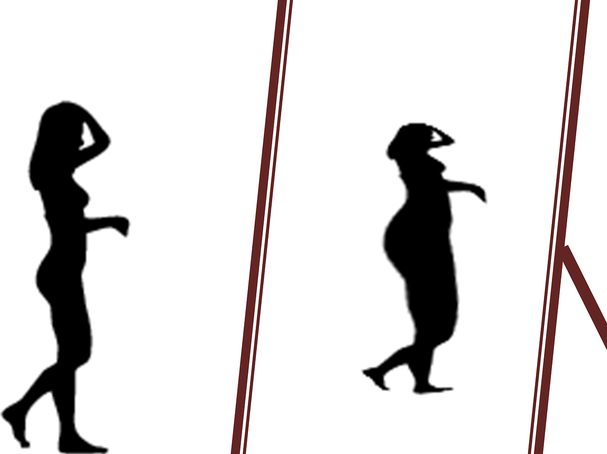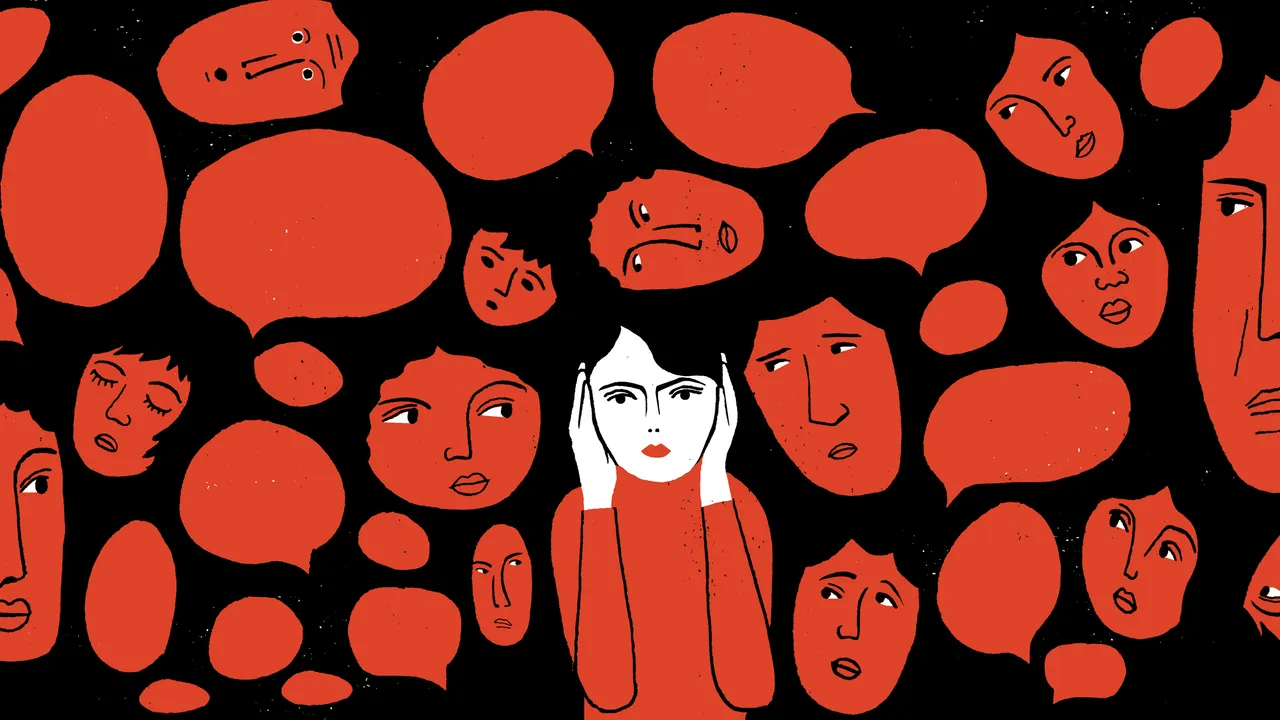Editor’s Note: This month, that is July 2020, FII’s #MoodOfTheMonth is Feminism And Body Image, where we invite various articles about the diverse range of experiences which we often confront, with respect to our bodies in private or public spaces, or both.. If you’d like to share your article, email us at pragya@feminisminindia.com.
With the advent of modernisation and globalisation, the 21st century has been marked by an escalated attention towards body image. The gargantuan grasp of mass media makes it the most potent percolator of prevalent socio-cultural norms regarding acceptable body forms. Body image is the perception of an aesthetic beauty that a person has of their physical self and related thoughts. These thoughts can be negative or positive, and they affect the mind and bodily well-being of the person experiencing them.
History Of Body Image
Sigmund Freud forms a small, yet an important part of the mosaic of millennial tastes. Freud is known to many as the propounder of Oedipal Complex which has gripped the minds of Gen-Z like a catchy rap song. I sometimes wonder—if Freud was alive today, what would he think of this fascination? A possibility of him connecting this fascination to Oedipal Complex isn’t far-fetched! One cannot ignore the pertinent and persistent role played by Freud’s psychoanalytic works in the development and conception of the ‘self’.
Neurologist Henry Head theorised that each person constructs a standard (like Freud’s superego) against which all body movements are judged and psychoanalyst Paul Schilder was the first to coin the phrase ‘body image’ in 1935. He suggested that body image was moulded by one’s interactions with others, and the extent of these faulty interactions shall determine the inadequate development of the body image. Research concerns of neurologists were to determine if specific brain areas are linked with body image. Hence, it focused on the bizarre alterations that brain damage could produce in a person’s perception of their body.
Also read: It Is High Time We Had A Conversation On Body Image
Negative Body Imaging
Mass media often displays cosmetically modified bodies, providing the audience with a pellucid idea of what kind of body form is acceptable. This is the major reason behind people’s fascination with thinness and white skin. They depict images promising social acceptance which later become a trend. A huge emphasis is laid on physical demeanour which pressurises all to mould themselves according to such faux beauty standards. This has doubled the negative effects on the psyche of the differently-abled people who start believing that their disability has pushed them on the path of undesirability, mediocrity and oblivion.
From soap operas to magazines to billboards, the lean and slender ideal is widespread. Women of all ages compare themselves with such models. Reality shows such as ‘India’s Next Top Model’ reinforces these views. For some of the women, achieving such shapes and zero figure sizes is not possible because of medical conditions. This gives rise to negative body imaging culminating into excessive dieting or exercise.

Effects on Women
Women have been overshadowed by the patriarchal society since times immemorial. Never have they been provided with a platform to develop their essence, and they often tend to inculcate the standards set by others and try to define their existence in the same way.
As opposed to the retro views of a ‘full-body’, women today are considered beautiful if they have an hourglass figure with not even an ounce of fat. From soap operas to magazines to billboards, the lean and slender ideal is widespread. Women of all ages compare themselves with such models. Reality shows such as ‘India’s Next Top Model’ reinforces these views. For some of the women, achieving such shapes and zero figure sizes is not possible because of various medical conditions. This gives rise to negative body imaging culminating into excessive dieting or exercise. Women also suffer from anorexia nervosa, bulimia, and other such related ailments.
Skinny and curvy actresses are portrayed as successful, socially desirable personalities in movies in contrast to regular-bodied women. Such a slender figure is associated with youthfulness and happiness. In pursuit of such bogus ideals, women go through procedures like injecting botulinum, skin lightening sessions, breast augmentation, rhinoplasty, etc.
Also read: Breast Shaming: Society’s Ironic Obsession With Boobs

Body discontentment is largely overlooked in men. It culminates into binge eating, obsessive exercising, depressive moods and low self-esteem. The muscular, ‘V’ shape structure – with broad shoulders and thin waist, is portrayed as the ideal body form for men by the media. The gripping agony of not being muscular and strong generates feelings of embarrassment and non-masculinity. This sets the ball rolling for depression leading to high-risk behaviour of alcohol and/or drug addiction and steroid use.
Effects on Men
Body discontentment is largely overlooked in men. Although body dissatisfaction is common in women, its implications are often found to be more severe in men. It culminates into binge eating, obsessive exercising, depressive moods and low self-esteem. The muscular, ‘V’ shape structure – with broad shoulders and thin waist, is portrayed as the ideal body form for men by the media. The gripping agony of not being muscular and strong generates feelings of embarrassment and non-masculinity. This sets the ball rolling for depression leading to high-risk behaviour of alcohol and/or drug addiction and steroid use.
Ethical Implications
“Every impression carries with itself efferent impulses.” ~ Paul Schilder
Therefore, negative body imaging too has myriad effects on society.
In the real world, Barbie would be a tall, 110 lbs. anorexic, and if G.I. Joe and Johnny Bravo were life-sized, their bicep size would be bigger than their waist size. The phantasm of ideal body surfaces in an adult as a result of being exposed to false standards of ‘beauty’ and ‘strength’ since childhood. We teach our children that there is a ‘right’ way to look and if we do not measure up to the benchmark, then we should lead a life which continuously strives to achieve the ideal body form.
Our body is not a public domain which, open for criticism and evaluation. However, negative body imaging forces a person to believe the contrary. Both men and women want to look like the people whose images are circulated across media in order to hear positive judgments about themselves. People are forced to feel uncomfortable in their own skin. In the chase for an ideal body image which corresponds to the socio-cultural norms, people forget to focus on developing one’s creative abilities that can help them in being a productive member of the society. Too much concentration on the external beauty is not useful – neither for an individual nor for the society. It does not open out on the future and often leads to stagnation.

Cartesian Philosophy For Leading A Better Life
The idea of body imaging and beauty prescribed by the media does not coincide with the concept of healthy living. Defining oneself on the basis of looks is absurd. Being conscious of your health is a different target. It is a means to reach other ends and not an end in itself.
Also read: Clicking Nudes: Documenting The Journey Of Self-Love For My Body
During the skeptical phases of Meditations, Descartes thinks that all his experiences might have been the shenanigans of an evil persona, a devil. I believe this evil personal finds its modern-day equivalent in the cynical mass media. Probably, the only rational manoeuvre one can opt in such circumstances is that of Cartesian logic – treating thought-constructs of negative body imaging acquired through mass media as false; shun all hoaxes and lead a happy and healthy life.
References
Featured Image Source: Feminism In India
About the author(s)
Sugandhaa's major areas of interest are aesthetics and feminism. She loves engaging with historical fiction - when she isn't reading it, she is daydreaming about it!







Well articulated!
Thank you.
Your article is a very interesting and contains philosophical , realistic and pragmatic approach that shows the misconception fill in our society.